Ginkgo Biloba Health Benefits
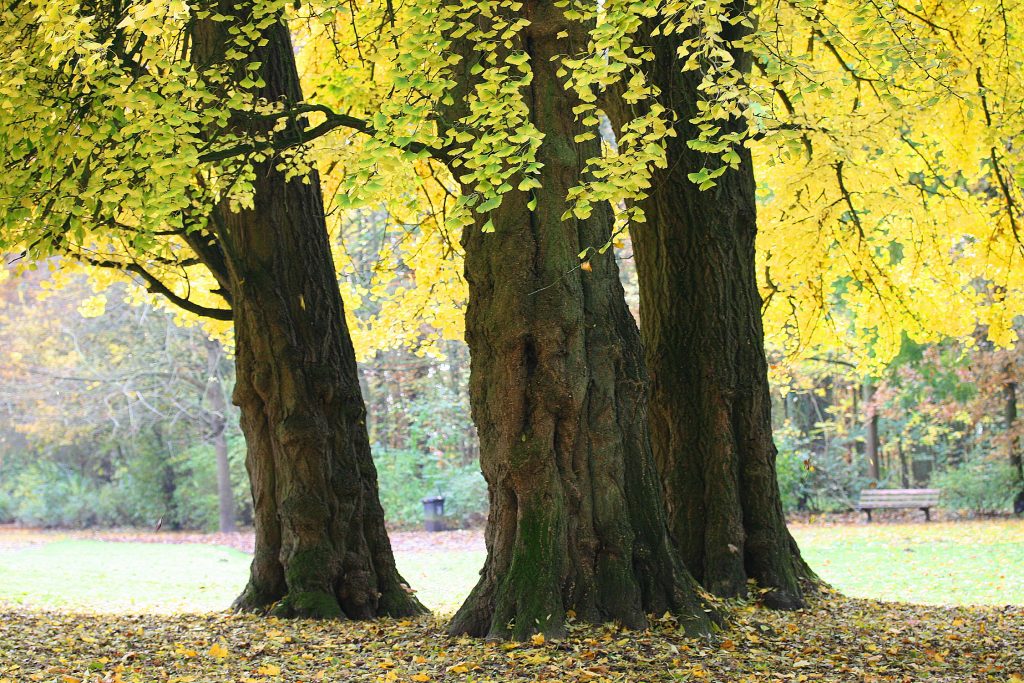
The mere mention of ginkgo Biloba gives rise to the idea of robustness and longevity. This tree of Asian origin indeed has many virtues to stimulate the body.
The Ginkgo Biloba, relatively rare in our regions, is, however, found in some public parks or large botanical gardens.
Native to Asia, the ginkgo is one of the oldest plants in the world, since it predates the arrival of the dinosaurs on earth!
Presentation of the Ginkgo and Its Leaves
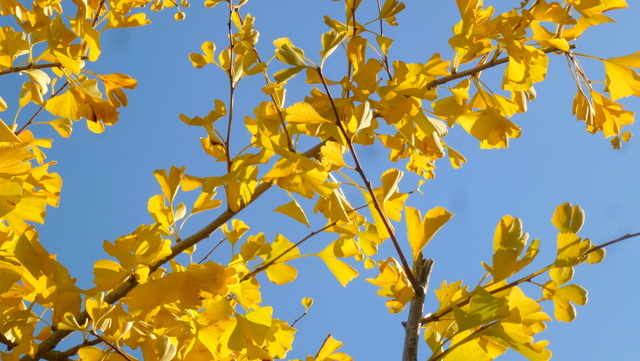
This colourful name evokes the golden colour of the ginkgo foliage in autumn. The golden-yellow leaves shivering in the wind like a multitude of gold coins have led to lending this poetic image to Ginkgo Biloba. This name comes from the Chinese Ginkyo or silver apricot tree, and the name Biloba refers to the leaves that have two lobes.
Ginkgo biloba belongs to the Ginkgoaceae family, of which it is the only representative. This plant species, 270 million years old, has survived thanks to its exceptional adaptability. This tree is even capable of resisting fire. Indeed, if the temperature rises, it can gorge itself with water, and its bark is covered with a fireproof juice!
Source: Consoglobe.
However, it is classified as a conifer despite its deciduous character.
Characteristic of Ginkgo Biloba:
– Ginkgo biloba gets its name from the shape of its leaves.
– The term Biloba refers to bilobed, i.e. fan-shaped leaves cut into two lobes.
– The ginkgo leaf venation system is unique.
Male and Female Plants

Ginkgos Biloba are dioecious plants, i.e. there are male and female subjects.
Female plants are rarely used for park ornamentals as they produce a significantly malodorous fruit when ripe.
In Japan, it is customary to teach children to differentiate between male and female subjects by observing the leaves:
– when the caesura of the lobes is marked (making the leaf look like a short panty) it is a male plant;
– when the caesura between two lobes is very erased (making the leaf look like a skirt), it is a female plant.
However, educational and colourful this method may be, it is not entirely reliable.
The difference between the two sexes lies above all, apart from fruiting, in a delay of a few days when the leaves fall.
Ginkgo Leaves: Proven Benefits
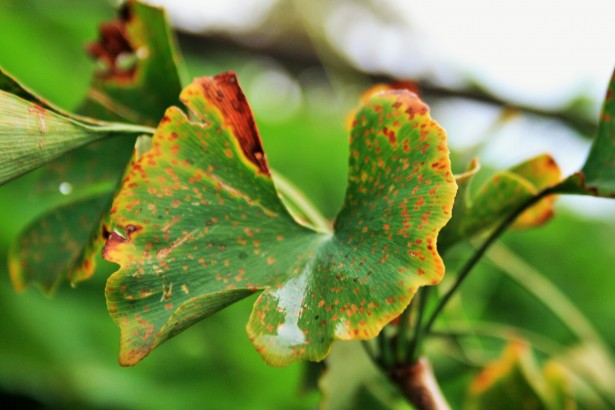
Ginkgo biloba has many virtues and, for this reason, is very often used in phytotherapy and homeopathic treatments.
In the West, the leaves are mainly used for therapeutic healings, while some Asian countries also use the fruit for the same purposes.
Uses of Raw Ginkgo Leaves:
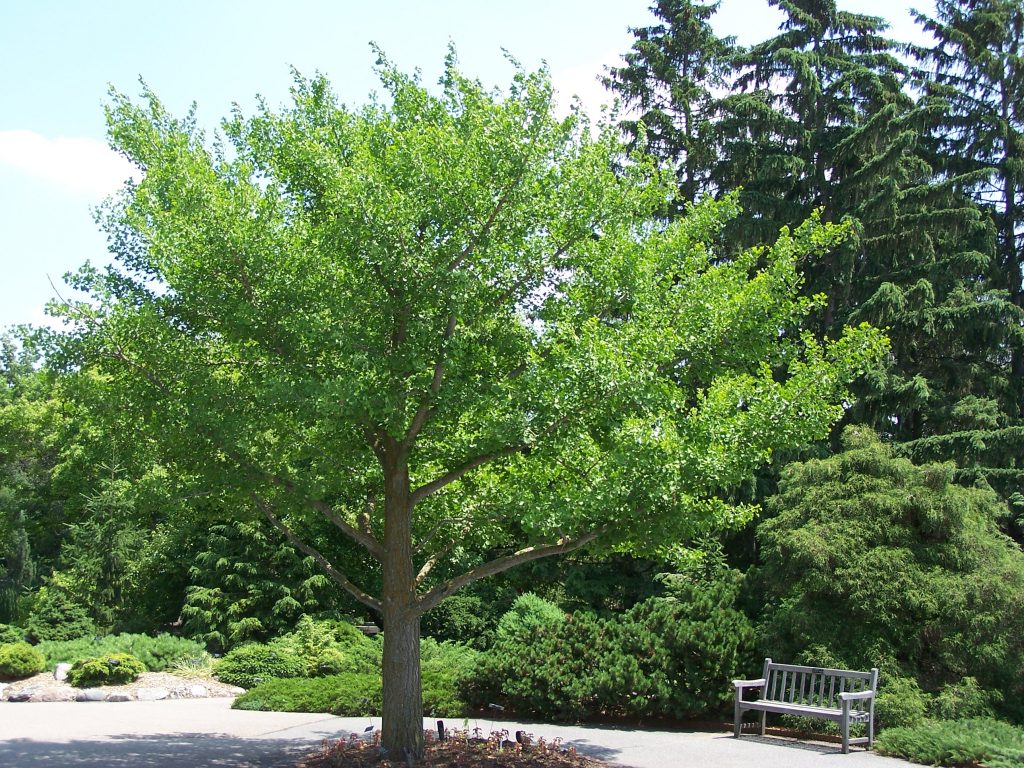
– In decoction: the sheets of ginkgo Biloba allow the relief of the bronchial and respiratory affections. Asthma and bronchitis are thus soothed. The leaves have sedative and expectorant virtues indeed.
– As a poultice: the leaves of Ginkgo Biloba contribute to the healing of burns and erythema. They can help to repair the skin in the case of frostbite.
Phyto-Therapeutic Products
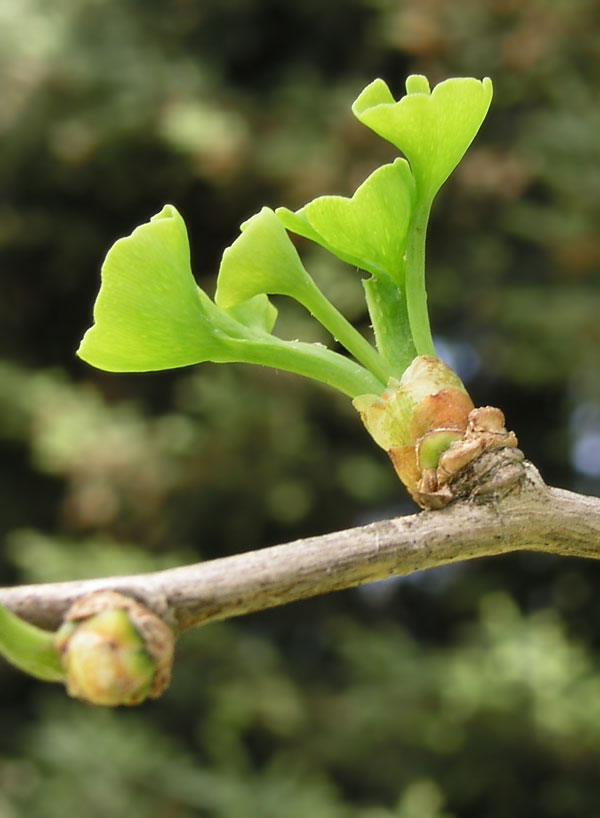
Ginkgo leaves are used in phyto and homeopathic products.
In the form of capsules, drops, syrup, ginkgo leaf extracts have recognized virtues in favour of improving blood circulation (thanks to a high content of flavonoids), stimulating memory and are an exceptional anti-inflammatory.
Benefits of Ginkgo Biloba:
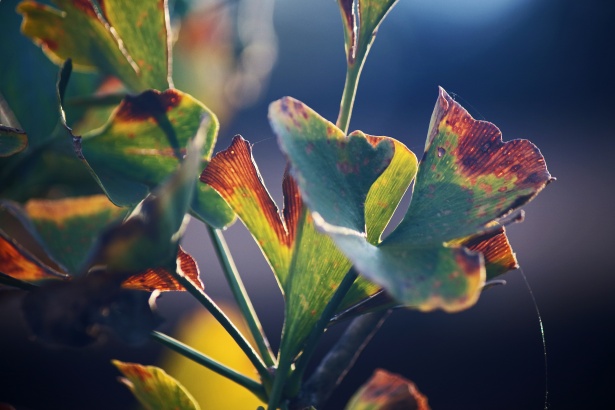
– improvement of blood circulation;
– prevents blood clots and thus indirectly prevents cardiovascular accidents;
– fight against arteriosclerosis;
– improves convalescence after thrombosis or stroke;
– stimulates erectile function thanks to its vasodilatory nature;
– is useful in the case of hemorrhoids and phlebitis;
– stimulates memory;
– promotes concentration;
– oxygenates the brain, slows cognitive decline and fights dementia (source: NCBI National Center for Biotechnology Information);
– anti-inflammatory;
– recommended for people suffering from rheumatic and muscular diseases, such as arthritis or osteoarthritis;
– alleviates tinnitus due to its vasodilatory effect;
– relieves migraines and headaches due to its action on cerebral circulatory insufficiency;
– combats the symptoms of generalised anxiety disorder (source: NCBI) in adults (results are obtained after one month of using standardized Ginkgo Biloba leaf extracts);
– protects the eyes because standardized Ginkgo Biloba leaf extract improves colour vision in diabetic retinopathy (source: NCBI) and the same extract may slow down the deterioration of vision in glaucoma patients (source: NCBI);
– restores damaged intestinal walls and repairs inflamed digestive organ tissue;
– finally, ginkgo leaves also help to tone the whole body and fight against nervous and physical fatigue.
Good to know: Ginkgo leaves, with their proven virtues for cognitive functions, are the subject of significant studies on the positive effects of their use in cases of Alzheimer’s disease. Thanks to the preservation of cells combined with tissue oxygenation, ginkgo leaves bring hope for improving the treatment of patients affected by this neurodegenerative pathology.
For more information and tips from health-talks.net, do not forget to share your experience in the comment section below.


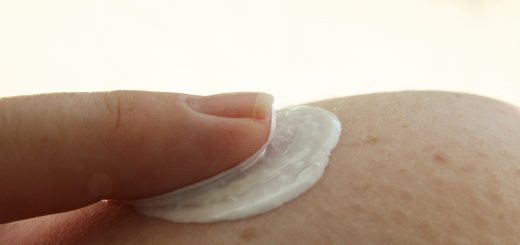

1 Response
[…] Ginkgo biloba is good for the micro-circulation at the cerebral level, so it is also interesting to promote […]